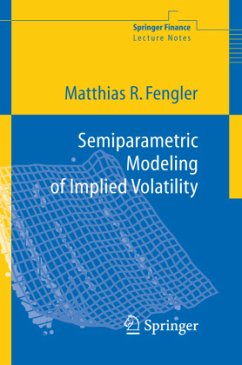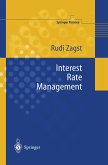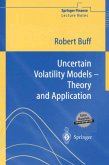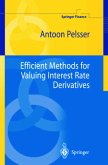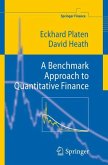Yet that weakness is also its greatest strength. People like the model because they can easily understand its assumptions. The model is often good as a ?rst approximation, and if you can see the holes in the assumptions you can use the model in more sophisticated ways. Black (1992) Expected volatility as a measure of risk involved in economic decision making isakeyingredientinmodern?nancialtheory:therational,risk-averseinvestor will seek to balance the tradeo? between the risk he bears and the return he expects. The more volatile the asset is, i.e. the more it is prone to exc- sive price ?uctuations, the higher will be the expected premium he demands. Markowitz (1959), followed by Sharpe (1964) and Lintner (1965), were among the ?rst to quantify the idea of the simple equation 'more risk means higher return' in terms of equilibrium models. Since then, the analysis of volatility and price ?uctuations has sparked a vast literature in theoretical and quan- tative ?nance that re?nes and extends these early models. As the most recent climax of this story, one may see the Nobel prize in Economics granted to Robert Engle in 2003 for his path-breaking work on modeling time-dependent volatility.
From the reviews:
"This book brings together recent advances in the theory of implied volatility and refined semiparametric estimation strategies and dimension reduction methods for functional surfaces. The theory of implied and local volatility is presented. The smile-consistent modeling approaches are discussed in detail. ... This book is for readers with a preknowledge of stochastic processes and interest in financial derivatives, as for example plain vanilla or exotic options." (Klaus Ehemann, Zentralblatt MATH, Vol. 1084, 2006)
"The parameter that measures volatility has long caused many problems in financial modeling. ... Fengler has written a research monograph. ... Concepts are presented in detail, elegantly connecting the past and current research, mathematical presentation, and numerical output (graphics). ... The appendices serve primarily for presentation of proofs and some results from stochastic calculus. This book is suitable for researchers, graduate students, and finance professionals." (Ita Cirovic Donev, MathDL, March, 2006)
"This short book addresses one of the most ... fundamental questions in financial mathematics and derivatives trading, namely, volatility modeling and management. ... the author does a good job in presenting the local volatility models, their implementation, and the problem in using this approach for hedging. ... It is an admirable attempt at the daunting task of modeling the dynamics of the IVS." (Andrew Carter and Jean-Pierre Fouque, SIAM Review, Vol. 49 (1), 2007)
"This book brings together recent advances in the theory of implied volatility and refined semiparametric estimation strategies and dimension reduction methods for functional surfaces. The theory of implied and local volatility is presented. The smile-consistent modeling approaches are discussed in detail. ... This book is for readers with a preknowledge of stochastic processes and interest in financial derivatives, as for example plain vanilla or exotic options." (Klaus Ehemann, Zentralblatt MATH, Vol. 1084, 2006)
"The parameter that measures volatility has long caused many problems in financial modeling. ... Fengler has written a research monograph. ... Concepts are presented in detail, elegantly connecting the past and current research, mathematical presentation, and numerical output (graphics). ... The appendices serve primarily for presentation of proofs and some results from stochastic calculus. This book is suitable for researchers, graduate students, and finance professionals." (Ita Cirovic Donev, MathDL, March, 2006)
"This short book addresses one of the most ... fundamental questions in financial mathematics and derivatives trading, namely, volatility modeling and management. ... the author does a good job in presenting the local volatility models, their implementation, and the problem in using this approach for hedging. ... It is an admirable attempt at the daunting task of modeling the dynamics of the IVS." (Andrew Carter and Jean-Pierre Fouque, SIAM Review, Vol. 49 (1), 2007)

